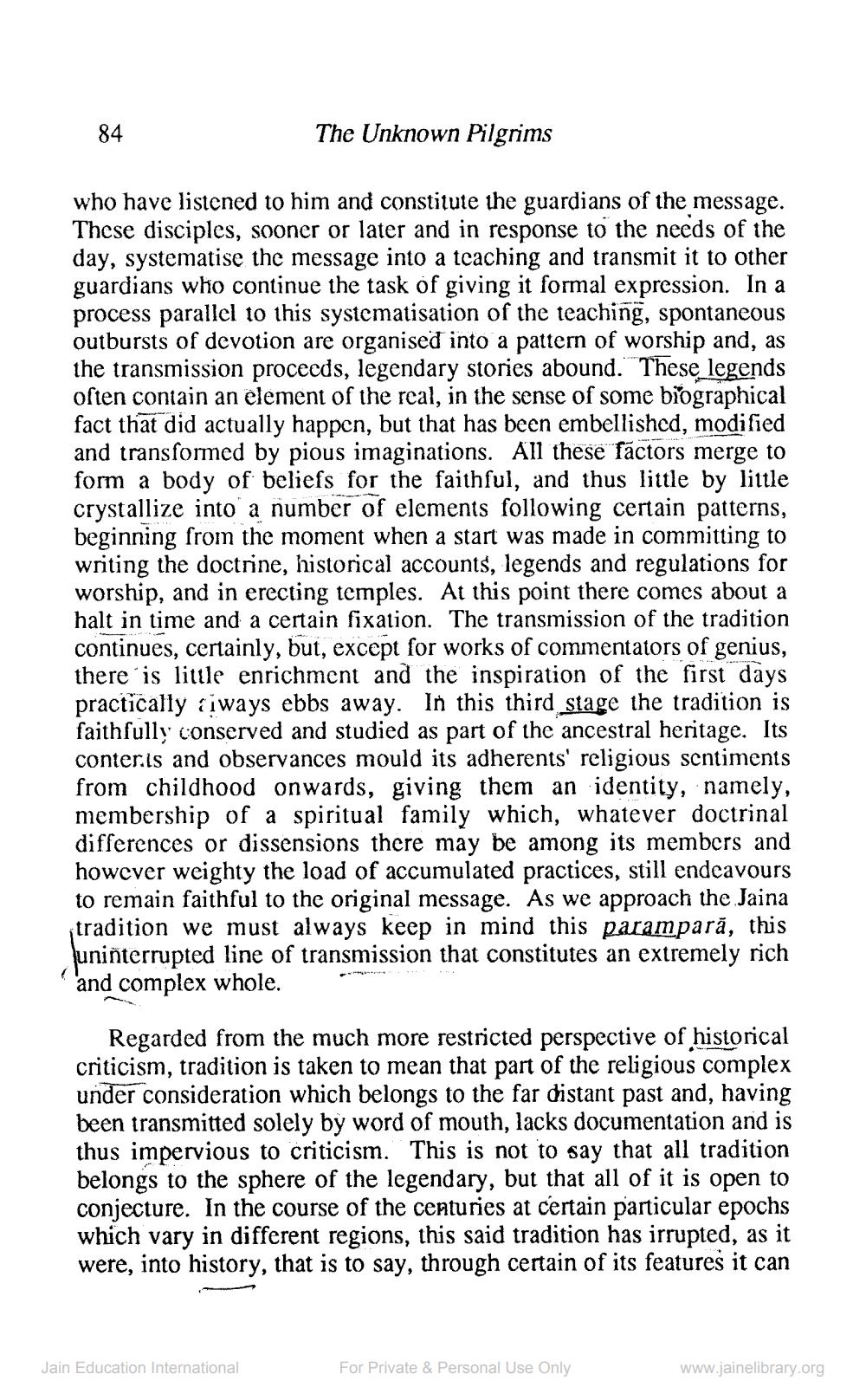________________
84
The Unknown Pilgrims
who have listened to him and constitute the guardians of the message. These disciples, sooner or later and in response to the needs of the day, systematise the message into a teaching and transmit it to other guardians who continue the task of giving it formal expression. In a process parallel to this systematisation of the teaching, spontaneous outbursts of devotion are organised into a pattern of worship and, as the transmission proceeds, legendary stories abound. These legends often contain an element of the real, in the sense of some biographical fact that did actually happen, but that has been embellished, modified and transformed by pious imaginations. All these factors merge to form a body of beliefs for the faithful, and thus little by little crystallize into a number of elements following certain patterns, beginning from the moment when a start was made in committing to writing the doctrine, historical accounts, legends and regulations for worship, and in erecting temples. At this point there comes about a halt in time and a certain fixation. The transmission of the tradition continues, certainly, but, except for works of commentators of genius, there is little enrichment and the inspiration of the first days practically always ebbs away. In this third stage the tradition is faithfully conserved and studied as part of the ancestral heritage. Its conter is and observances mould its adherents' religious sentiments from childhood onwards, giving them an identity, namely, membership of a spiritual family which, whatever doctrinal differences or dissensions there may be among its members and however weighty the load of accumulated practices, still endeavours to remain faithful to the original message. As we approach the Jaina tradition we must always keep in mind this paramparā, this juniñterrupted line of transmission that constitutes an extremely rich and complex whole. *******
Regarded from the much more restricted perspective of historical criticism, tradition is taken to mean that part of the religious complex under consideration which belongs to the far distant past and, having been transmitted solely by word of mouth, lacks documentation and is thus impervious to criticism. This is not to say that all tradition belongs to the sphere of the legendary, but that all of it is open to conjecture. In the course of the centuries at certain particular epochs which vary in different regions, this said tradition has irrupted, as it were, into history, that is to say, through certain of its features it can
Jain Education International
For Private & Personal Use Only
www.jainelibrary.org




